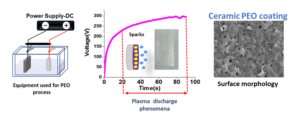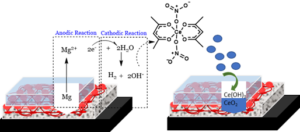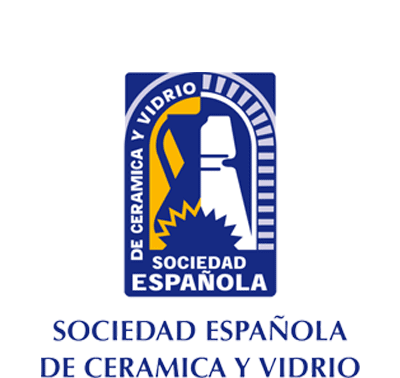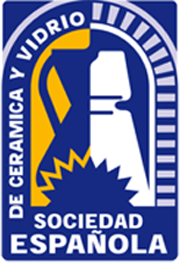08 Nov A Smart Integrated Anti-Corrosion System Based on PEO Ceramic and Sol-Gel Coating for Controlling the Corrosion of AZ31B Mg Alloys

Author
Emilia Merino Abad – Instituto de Cerámica y Vidrio, CSIC
Magnesium alloys have become promising materials for different applications due to its lightweight structural metallic material with excellent physical and mechanical properties. The low density, good recyclability and high strength-to-weight ratio make them exceptional candidates in the automotive and aerospace sectors. The use of light-weighting material such as magnesium to replace some structural parts in airplanes or cars would be a viable method to reduce the overall weight of vehicle bodies, the fuel consumption and thus the greenhouse gas emissions (GHE) and its contribution to global warming. The GHE reduction is a target included on the Sustainable Development Goals (SDG) 2030. In fact, the transition towards zero carbon emission by using green-energy vehicles would be more suitable by shifting to lightweight vehicles.
However, the susceptibility of Mg alloys to corrosion limits its widespread use. The fast corrosion deterioration turns to efficiency and economic losses for the automotive and aerospace industries. In order to control the corrosion of Mg alloys, and therefore, to avoid the early loss of mechanical strength properties, smart coatings have been reported as an efficient system. Self-healing coatings are defined as smart coatings that can repair themselves to recover their properties. When a pitting corrosion process occurs, these coatings are able to repair the defects totally or partially through a dissolution and reprecipitation interaction in the local defect, providing long-term protection; a concept that it is important for automotive and aerospace industries.
Surface modification techniques such as Plasma Electrolytic Oxidation (PEO) and sol-gel technology have attracted increasing technological and industrial interest.

Figure 1: Schematic design of PEO process and surface morphology of the ceramic PEO coating.
PEO is an advanced electrochemical surface treatment which is used to develop ceramic and strongly adherent coating to enhance the corrosion resistance and the tribological behavior (wear, abrasion, and friction resistance) of Mg-based substrate. A typical arrangement for PEO process is shown in Figure 1. During this process, the Mg alloy substrate is anodic polarized at high voltage in a basic electrolyte to promote the growth of the ceramic porous coating through plasma thermochemical reactions. Since the electrolyte composition is one of the most important parameters to considered to improve the corrosion resistance properties of this oxide layer, the Mg alloy were anodized by using different environmentally friendly electrolytes composed by different salts such as NaOH, NaH2PO4, Na2SiO4 and Na2CO3 salts.

Figure 2: Schematic design of the proposed smart multilayer coating system
Due to the PEO coating porosity is a drawback because the corrosive agent can diffuse through the pores and easily reach the substrate, this ceramic coating cannot provide a long-term corrosion protection. To provide a smart and longer-term corrosion protection, the deposition of a cerium sol-gel coating to seal the pores of the oxide coating followed by a deposition of an epoxy-hybrid sol-gel system as a barrier-top coating can be considered as shown in Figure 2.
Cerium sol-gel coatings are attracting the special attention in my PhD thesis due to the ability of cerium species to dissolve and re-precipitate as cerium oxides or hydroxides over cathodic sites on the metal surface, giving rise to a blocking and inhibitive effect. The preparation of Cerium (Ce) and Ce-SiO2 sols have been studied using transition metal salts (cerium (III) nitrate hexahydrate or Cerium (III) Acetate Hydrate) as precursors at room temperature. Depending on the sol, complexing ligands and pH modifying and stabilizing agents were used to facilitate the sol and then gel formation, avoiding the precipitation of cerium particles. Preliminary results showed promissing corrosion behavior of cerium-based sol-gel coatings deposited on bare AZ31B Mg alloy. A clear self-healing behavior produced by the ce-sol-gel coating has been observed. (Figure 3) After maintaining the ce-sol coatings in NaCl immersion, cerium oxide/hydroxide precipitates are detected, blocking the corrosion and protecting the surface of the alloy.

Figure 3. Raman mapping perpendicular to the surface along line P of the coated sample after 120h of immersion in NaCl solution. Raman mapping showed a peak at 460cm-1 that belong to Ce-O bond formation.
The design and preparation of epoxy-silica passive sol-gel coating as top coating was developed to delay the diffusion of aggressive Cl– ions into the Mg metal. The organic-inorganic hybrid sols were prepared via acid catalysis using (3-(glycidyloxypropyl) trimethoxysilane) GPTMS, SiO2 nanoparticles, TEOS (tetraethoxysilane)/MTES (Methyltrietoxysilane), and different ring epoxy opening agents. Results showed that epoxy opening agents promotes the organic polymerization through the formation of a poly (ethylene oxide) chain at room temperature, resulting in highly crosslinked, crack-free and dense hybrid silica organic-inorganic sol-gel coatings (Figure 4) and thus better corrosion resistance properties.

Figure 4. 13C spectra of the synthesisized organic-inorganic hybrid sol showing non-epoxi groups after the addition of ring epoxy opening agent.

Figure 4. Schematic design of self-healing mechanism of the smart multilayer coating system
At present, my work is focused on combining the filtered cerium-oxide layer with the hybrid sol-gel layer. A good synergistic effect of the multilayer system should be achieved to improve the corrosion behavivour of Mg alloys for its use in automotive and aerospace industries.
The use of these alloys could lower the weight and prices of the structural parts of vehicles and therefore, reduce both the energy demand and the CO2 emissions.




